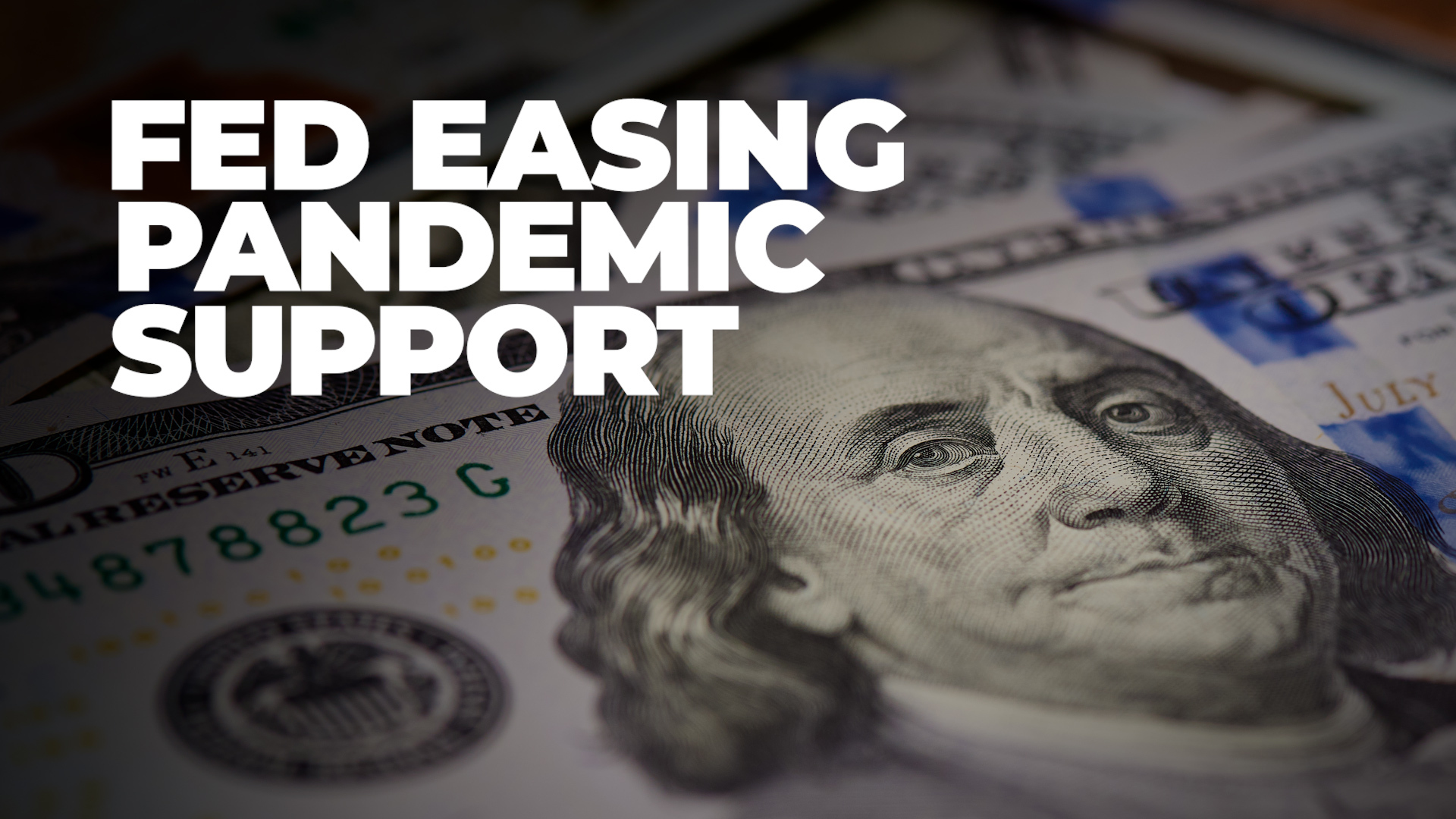
SIMONE DEL ROSARIO: IT’S OFFICIAL.
THE FEDERAL RESERVE JUST ANNOUNCED IT’LL START SCALING BACK BOND PURCHASES LATER THIS MONTH, PULLING BACK ON PANDEMIC AID FOR THE FIRST TIME.
JEROME POWELL / FEDERAL RESERVE CHAIRMAN: “Our asset purchases have been a critical tool, they helped preserve financial stability early in the pandemic and since then have helped foster smooth market functioning and accommodative financial conditions to support the economy.”
SIMONE DEL ROSARIO: SINCE MARCH 2020 – THE FED HAS BEEN PUMPING 120 BILLION DOLLARS A MONTH INTO THE ECONOMY BY BUYING UP BONDS. THIS HAS MADE BANKS FLUSH WITH CASH. THAT ENCOURAGES MORE LENDING AND INVESTMENT AT LOWER INTEREST RATES – WHICH STIMULATES THE ECONOMY.
NOW THE FED IS SIGNALING THE ECONOMY IS STRONG ENOUGH ON ITS OWN TO START TAPERING BACK ON THE BOND BUYING, 15 BILLION AT A TIME.
INSTEAD OF SPENDING 120 BILLION A MONTH – THE FED SAYS THEY’LL SPEND 15 BILLION LESS, OR 105 BILLION, LATER THIS MONTH. NEXT MONTH THEY PLAN TO REDUCE PURCHASES BY ANOTHER 15 BILLION, TO 90 BILLION.
JEROME POWELL / FEDERAL RESERVE CHAIRMAN: “If the economy evolves broadly as expected, we judge that similar reductions in the pace of net asset purchases will likely be appropriate each month, implying that increases in our securities holdings would cease by the middle of next year. That said, we are prepared to adjust the pace of purchases if warranted by changes in the economic outlook.”
SIMONE DEL ROSARIO: NOW WE TEND TO SEE THE EFFECTS OF TAPERING RIGHT AWAY – THROUGH STOCK MARKET VOLATILITY – AND HIGHER INTEREST RATES ON LOANS. BUT IT ALSO COULD HELP COOL DOWN THE INCREDIBLE INFLATION RATES WE’VE SEEN, MAKING THE COST OF LIVING MORE AFFORDABLE.
I’M SIMONE DEL ROSARIO FROM NEW YORK IT’S JUST BUSINESS.







